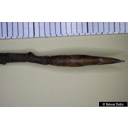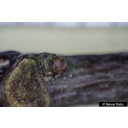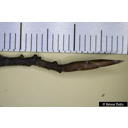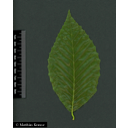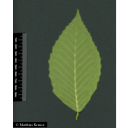Useful information about the taxon (species, subspecies, variety...)
Fagus grandifolia Ehrh. 1787
Fagaceae
(APG IV)American beech
Akzessionnummer: SP-EB-054-9981
Pflanzjahr: 2015
Taxon concept: The Plant List (2014), version 1.1
Distribution: native to southeastern Canada and the eastern United States incl. southern States of the Great Plains, isolated sites in Mexico
Fagus grandifolia Ehrh. - Accepted: Fagus grandifolia Ehrh. bei The Plant List (2010); Familie: Fagaceae (APG III)Fagus grandifolia Ehrh. - Accepted: Fagus grandifolia Ehrh. bei Zander 2008; Familie: Fagaceae (Zander 2008)Fagus grandifolia Ehrh. - Accepted: Fagus grandifolia Ehrh. bei The Plant List (2014), version 1.1; Familie: Fagaceae (APG III)Fagus grandifolia Ehrh. - Accepted: Fagus grandifolia Ehrh. bei The Plant List (2010); Familie: Fagaceae (APG IV)
- Flowers
- monoecious
- Flower ecology
- wind-pollinated (anemophilous)
- Life form
- tree
- Foliage persistence
- deciduous
- Fruits
- paired nut fruit in a soft-spined cupule
- Fruit ecology
- barochorous and zoochorous (herbivors and birds)
- Light conditions
- very shade tolerant species
- Natural occurrence (habitat)
- mixed deciduous forests (e.g. Sugar Maple-Beech-Yellow Birch Forest, Red Spruce-Sugar Maple-Beech Forest and Beech-Sugar Maple Forest)
- Vegetation typ and synecology (plant community)
- temperate, mixed mesophytic deciduous forests
- Constraints according moisture
- sensitive to drought, frost and frequent flooding
- Usage
- as fuel wood because of its high density and good burning qualities; the roasted seed is a coffee substitute; timber suited for the production of flooring, furniture, veneer, plywood and railway ties; used for the production of handicrafts and in the manufacture of paper and pulp
Bundesamt für Naturschutz (BfN) (1999-2001 and ongoing): Floraweb - Daten und Informationen zu Wildpflanzen und zur Vegetation Deutschlands. www.floraweb.de.; The International Plant Names Index (2009). Published on the Internet http://www.ipni.org; Courtesy to IPNI, 2009. Exported from IPNI at date: 2009-09-22 20:17:51;
Diese Webseite verwendet Google Maps, um Karten und Standorte von Pflanzen in den Hohenheimer Gärten anzuzeigen. Dadurch werden unter Umständen Daten an Google weitergeleitet, was mit einer Verarbeitung Ihrer personenbezogenen Daten verbunden sein kann. Die Datenschutzerklärung von Google finden Sie hier: Datenschutzerklärung von Google

